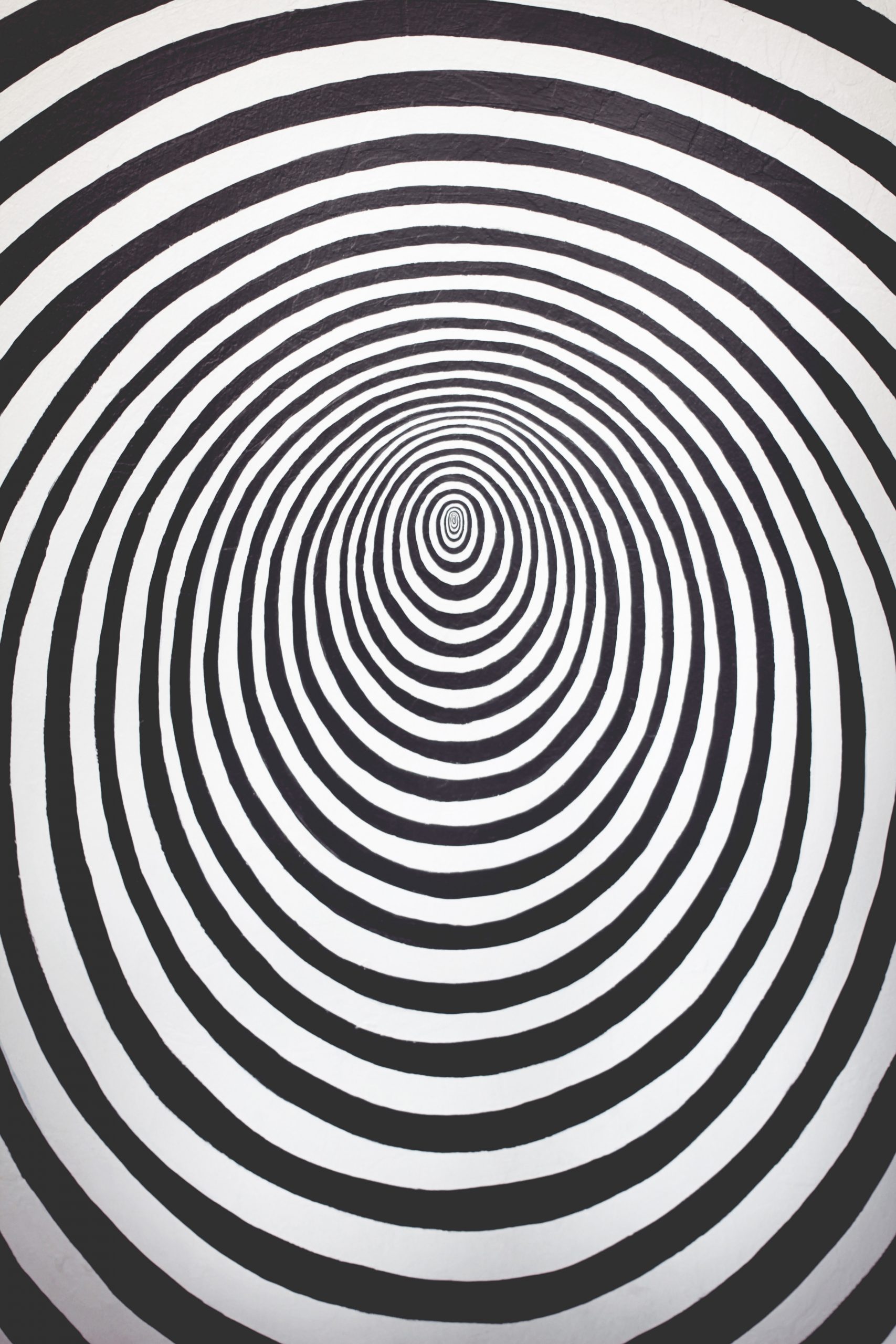How anger can improve creativity
I’m sure this isn’t the first piece of content you’ve stumbled upon about anger. Many of the ideas out there provide useful and common suggestions to help with anger. However, whilst researching and preparing this article, it became apparent that nothing really addressed how anger and creativity can be associated and used to generate positive outcomes.
The following combines personal experiences, research and thoughts on how anger can be harnessed and exploited to achieve deeper creative thinking and improve our creative productivity and efficiency.
Anger is everywhere
We look at anger and being angry as a negative personality trait and something that should be avoided at all costs. However, there is a place for anger when it aligns with creativity. So how do we incorporate anger into the creative process?
With anger being seen as a dangerous, destructive and an unhelpful characteristic, it’s no wonder that we all steer clear of someone who is in the midst of an angry episode. Although it is difficult not to witness anger on a daily basis; media, social networks, politicians, activists – they all typically build their dialogue around an angry rant or outburst. Maybe they believe that being angry somehow reinforces their position, with the aim to bring people of similar beliefs closer, whilst driving all that disagree or oppose their views to retreat. We also see anger in the workplace, typically caused through differences of opinion, power struggles, or work ethic unbalances from colleagues.
It is for these reasons (and many more) that anger is considered a negative emotional reaction that affects everyone in its proximity.
How anger fuels creativity
Go back several generations and we quickly discover examples of creatives, artists, designers and writers that have created masterpieces and successful careers through becoming and being outraged, angry and annoyed – driving their art or performance through a wild disregard for structure, expectation and control. When you look at works from these artists, it would seem that anger does have a place in the creative mind and can influence success.
Many artists, historical and now, express their anger in their art. How their anger gets onto a canvas, screen or book provides us with some very powerful outputs. However, there’s a fine line in how they adopt and use anger – too much and it may be off-putting, too little and their’s little to no impact. They all use anger and negative emotion with caution.
Let’s take a look at a few famous examples of anger in art.
Edvard Munch
Second only to Leonardo da Vinci’s Mona Lisa, Edvard Munch’s The Scream may be the most iconic human figure in the history of Western art. Its androgynous, skull-shaped head, elongated hands, wide eyes, flaring nostrils and ovoid mouth have been engrained in our cultural consciousness; the swirling blue landscape and especially the fiery orange and yellow sky have triggered many theories regarding the scene that Edvard depicted. Are they the emotions the painter felt while walking at sunset when the sky turned red, when his friends left him, or something disturbance he sensed in nature?
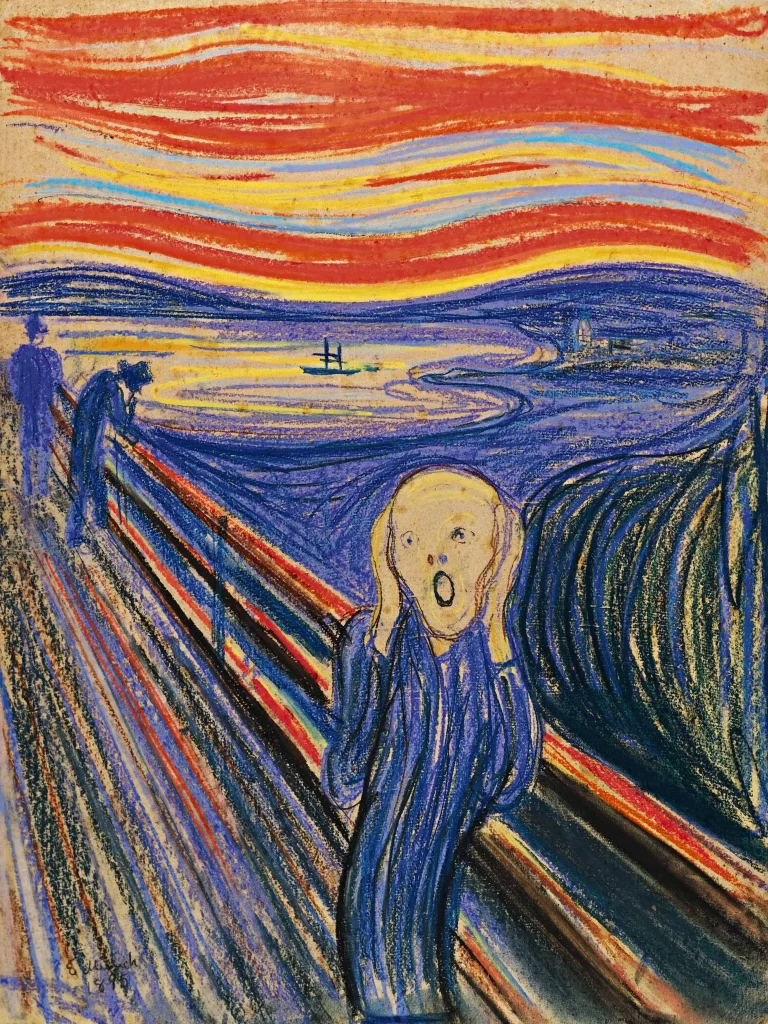
Pablo Picasso
Another perfect example of anger in an artwork is one of the best works of the famous artist from the last century – Pablo Picasso and his painting ‘Guernica’. It is an outcome of Picasso’s mixed emotions after an act of war in Guernica, when Nazi Germany and Fascist Italy bombarded the Basque Country town during the Civil War in Spain. You can clearly capture the anger and desperation, loss, sadness, and confusion in his painting.
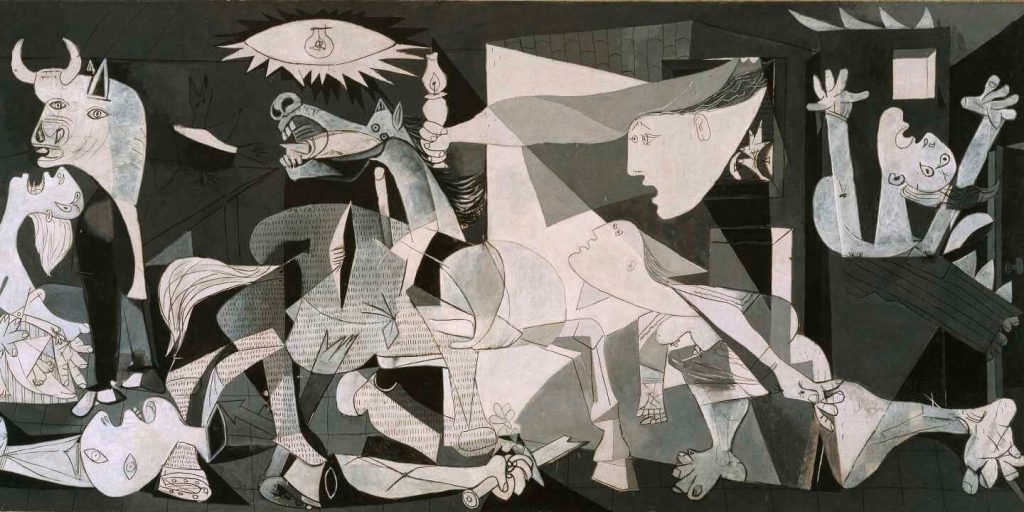
Banksy
Another world-famous artist – British street artist Banksy, made a clear anger statement with his work ‘Rage, the Flower Thrower’. The piece is located in Bethlehem, on a wall that separates Palestine from Israel. The man in the painting is raging with anger, but instead of a bomb, a Molotov cocktail, or a rock, he is holding a colourful bouquet of flowers. As Banksy is a known pacifist who is against any war, this is a powerful statement against the violence in the region. The bouquet symbolises peace and love.
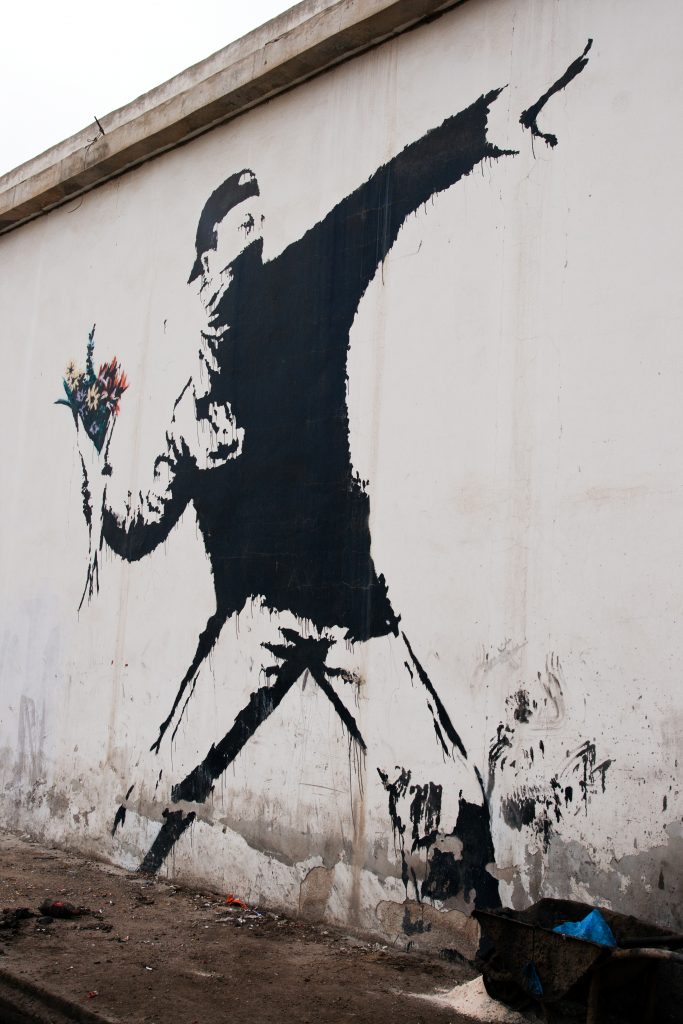
The artistic temperament
When someone says “you have an artistic temperament”, what do they mean? I doubt very much it’s meant as a compliment!
Since the beginning of time, an artistic temperament has predominantly been connected to mental illness. And is often used as a code for other kinds of socially unacceptable behaviour, in particular when someone is said to be ‘flying off the handle’, ‘throwing their toys out of the pram’, ‘having a hissy fit’, or ‘temper tantrum’. But seriously, why is it that having an artistic temperament is known for its negative effects of being destructive, unnecessary or unacceptable?
More than ever before, we are all aware of the dangers and downsides of our bad behaviour. We have concerns about toxic people and how they may effect our own behaviours, and we all know that life is too short to give arseholes a platform just because they’re some kind of self professed creative genius. However, have we all gone a little too far in repressing our own anger and to ensure it doesn’t find a place of expression in our artistic abilities and work?
Not angry enough
Over my long and varied creative life I always thought that when I was angry I couldn’t focus and deliver great work. I believed that my anger drove anxiety, frustration, poor decision making and sometimes extreme distraction and boredom, and that all of these things would result in me just delivering mediocre if not crap creativity.
However, after deliberately and consciously managing my anger and annoyances, I noticed that my creative thinking and output was actually getting worse, my brain was empty, the world was uninspiring and I was even more distracted than I’d ever been.
My problem? I wasn’t angry enough!
My creativity was being dampened, because I was no longer fighting the fight, shouting the odds, forcing my opinion or throwing my toys! For me the connection between an anger absent life totally correlated with a flatness of my creative thinking and ability.
For most of us, our sense of how to deal with anger, or more importantly how to repress it, is driven by the roles we were expected and forced to ‘play’ when we were children and young adults. When we were growing up, we only had a few acceptable emotional responses; happy, fun, sociable, friendly, imaginative etc. Disagreement, anger, outburst and the odd temper tantrum were simply not permitted and would be quashed the moment they appeared. If your upbringing was anything like mine, this direction and emotional control made life easier for the people who needed to control, manage and regulate me. Although all of this forced suppression of ‘negative’ emotions certainly did not make life easier for me!
Our natural anger ability
- Think of three ways that being happy or kind is a useful emotion? Easy, right?
- Now think of three ways that being angry is a useful emotion? I suspect that was a little harder.
If anger isn’t a useful emotion, why do we have it in the first place? What does anger do? And why does it come so naturally?
We all have an angry face – clenched jaw, furrowed forehead, squinting eyes, shoulders up, crossed arms. All of these signal aggression and dominance both in the animal, and human world. Anger is a way to win arguments, beat opponents or bring on confrontation through appearing or being threatening.
But we’re not talking about this type of anger. We are trying to establish a type of anger that plays a role in our creative process where we’re not trying to threaten, intimidate or manipulate people, or hold onto power or force our place in society.
Creative anger is about expressing your thoughts and emotions in ways that communicate a complex and deep emotion we hold. And we use anger to extract these emotions to help build a solid story to influence others thinking. It’s not about being physically aggressive or confrontational, it’s more subtle than that, and yet it’s so more powerful. Creative anger hangs around for days, years, decades and lifetimes – pen to paper, brush to canvas, notes to music.
We can all have an angry rant, but this is short lived, whereas anger in art and creativity last an eternity.
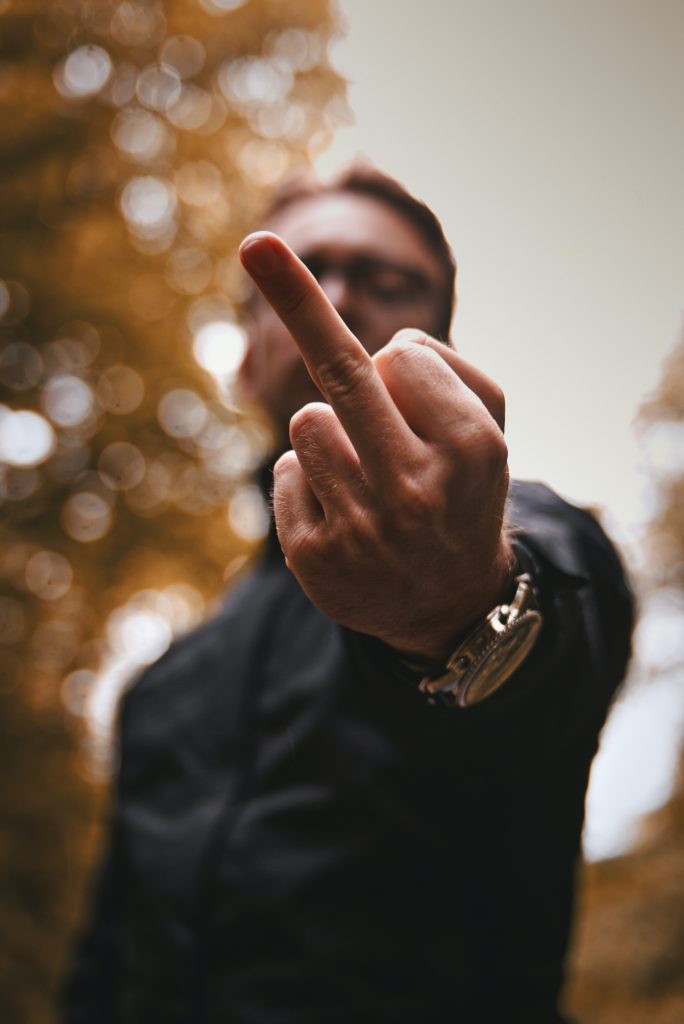
Anger and anxiety
Why do we need more anger? For me, all the childhood injustices, present-day situations that I simply couldn’t navigate, and people around me who treat me in ways I do not like, allows my anger to surface, and it’s only when my anger is present that I become deeply aware and connected with a situation. It is this state of mind that helps me appreciate my feelings, pinpoint the reasons why, and help establish a method of management and control. It then becomes my choice to either let it all out, or keep it locked away and to fight another day.
Anger clarifies our emotions and helps draw our boundaries. If we do this effectively, we can suppress it’s harmful effects on our body and mind, help us deal with injustice, improve our relationships, and make our world a better place.
Opinionated creativity
For the most part, people see creativity as ‘pretty’. However, pretty things hold little thought or meaning to them. And without meaning, creativity has no depth, provides little or short lived inspiration and no personal attachment. And that’s never been the kind of creative I want to be associated with.
But when we create or make art as a response to injustice, a way to change the world, or something that is an expression of our own identity, we bring to life our personality and show people who we truly are – this I believe is what should always be at the core of how we achieve and view our creativity. Obviously we need to bring in anger at appropriate points of our creative thinking and inspiration, and use the exact amount required to create intrigue, discussion, emotion and reaction – discovering how much is the exciting and creative part.
Anger brings expression
If you were to draw, paint, or write about an experience that made you angry, you’ll be expressive, engaged, original and provocative. Your mind will wander and expand your thinking across multiple ideas. But if you did the same for an experience that made you happy, you’ll be more structured, confined, detailed and not wander too far from your happy place.
Being angry boosts your energy and focusses attention, whilst being less logical and structured. However it’s also true to say that when you’re angry, or work within that emotion you’ll drain energy far faster. Being angry is exhausting.

Get it all out
Anger is a fast emotion and you need to capture all it’s benefits before it vanishes. Don’t switch on the computer, start an application or type on the keyboard – grab a pencil and pad, scribble until you can’t scribble anymore, just keep the emotion flowing for as long as you can. Use a dictaphone and have a rant. Grab a paintbrush and throw colour on the canvas. Duplicate and deface an existing piece of work. Yes you may end up with a load of garbage, but it’s a very liberating thing to do – and I’m sure you’ll be surprised with what comes out!
Be careful what you wish for
By listening to your inner voice when angry, you’ll reveal a lot about what’s going on in your head and your heart. When you hear yourself say “I wish”, that’s a trigger to get it all down and out. Your “I wish” could be a selfish thought, a sense of entitlement or a need to do things your way. Or it could be an “I wish” for something better, kinder, more loving or passionate. Whatever your ‘I wish’ is it will provide an opportunity for greater creative expression and emotional interpretation.
Stop tip-toeing
There’s no point tip-thing around the fact that everyone gets fed up from time to time. It’s up to us to embrace all our emotions, experiences and present frustrations, connect them, manage them and use them in a way to establish new ways of thinking and drive our creativity forward.






